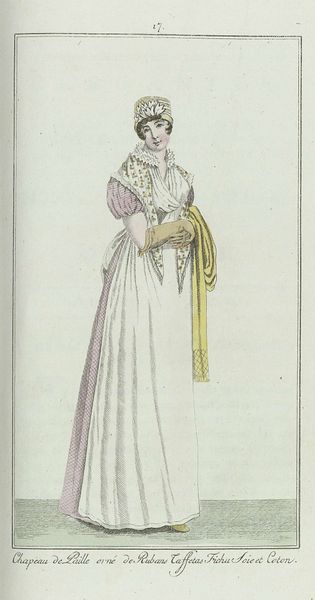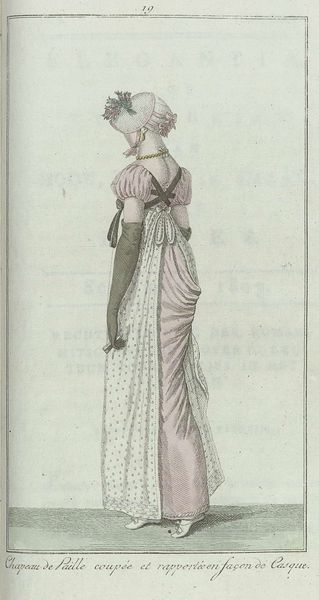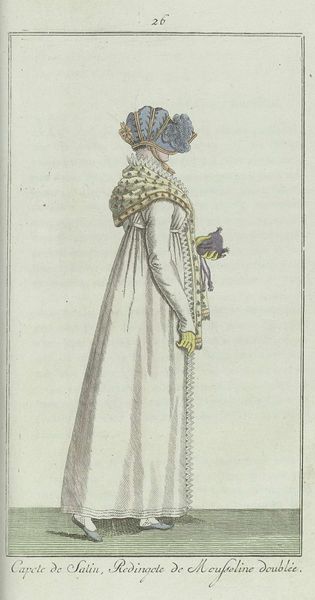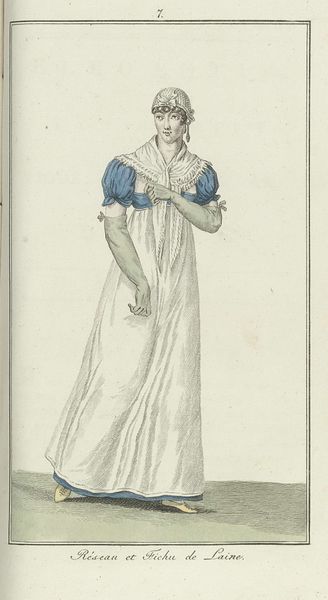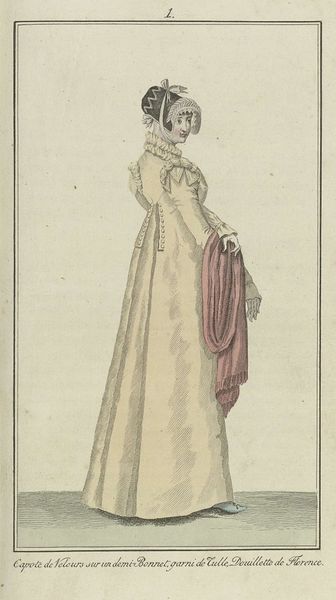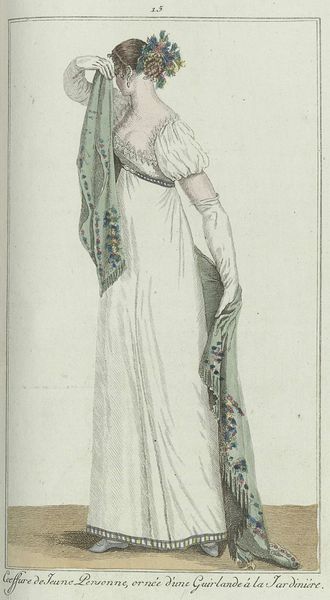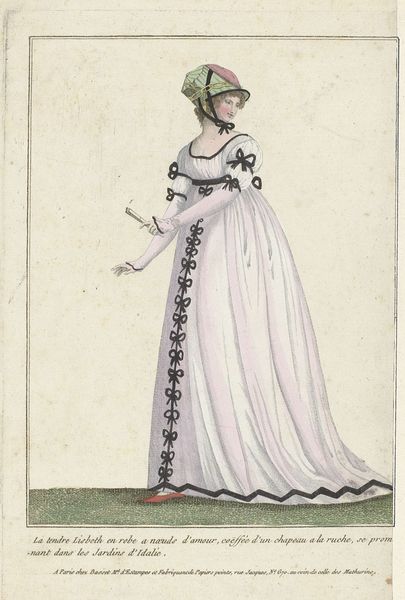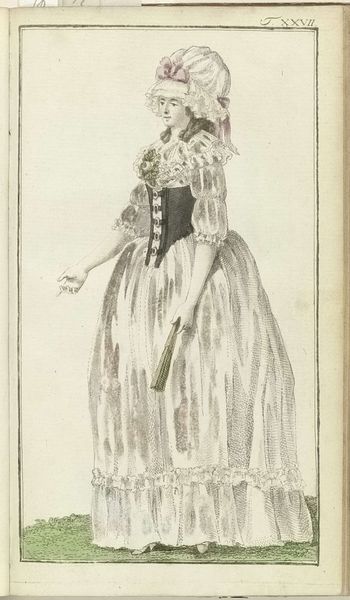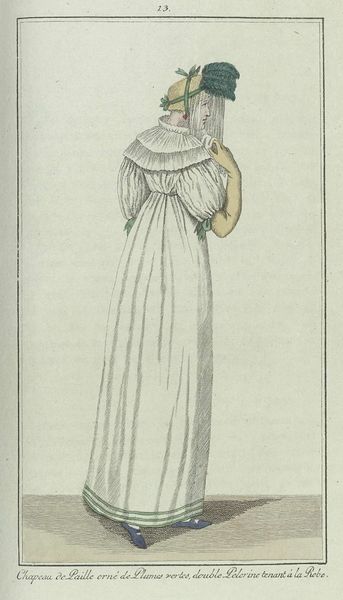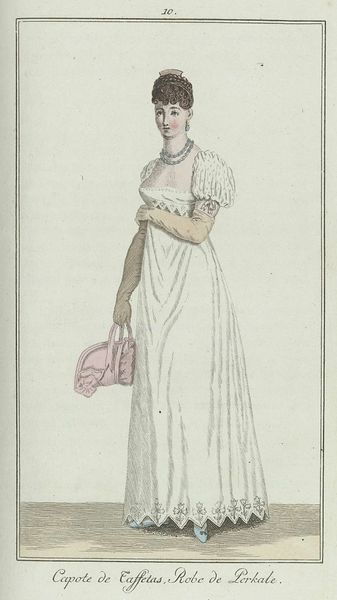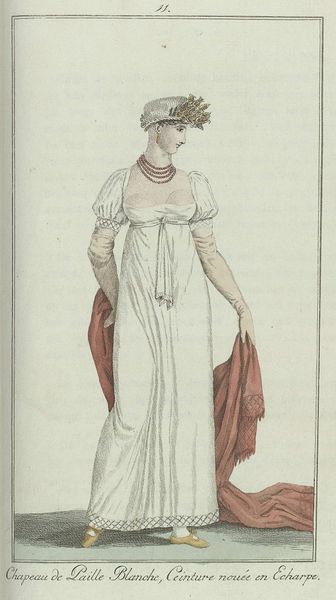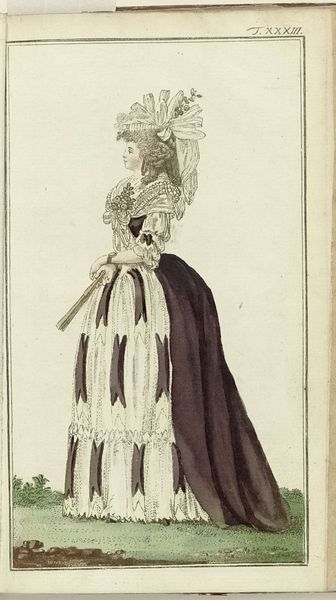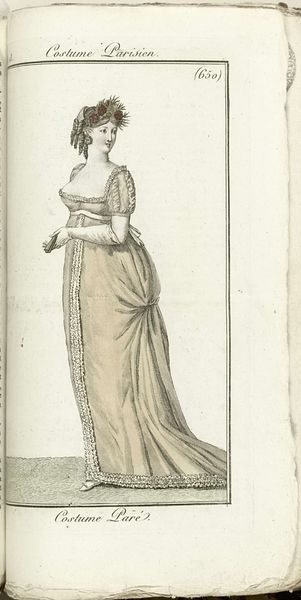
Elegantia, of tijdschrift van mode, luxe en smaak voor dames, September 1807, No. 22: Paysane a Barbas de Levantine... 1807
0:00
0:00
drawing, print
#
portrait
#
drawing
#
neoclacissism
# print
#
figuration
#
historical fashion
#
character sketch
#
fashion sketch
#
dress
Dimensions: height 220 mm, width 123 mm
Copyright: Rijks Museum: Open Domain
This fashion plate was made in 1807, part of a Dutch magazine called Elegantia, which catered to women interested in the latest styles. But this image does more than simply reflect fashion trends. It also evokes a network of social meanings. In post-revolutionary Europe, clothing became a symbol of class and political affiliation. This particular dress is meant to evoke the countryside. The word "Paysane" in the title means peasant in French. However, the woman is wearing a refined version of what a farm worker would wear. This indicates that it might be a costume for a ball, or just an aristocratic fantasy. Fashion plates like this one played a crucial role in shaping social norms and desires. Historians can use these plates, along with other archival sources like letters, diaries, and newspapers, to reconstruct the complex social landscape of the early 19th century. The meaning of art and fashion is always contingent on its social and institutional context.
Comments
No comments
Be the first to comment and join the conversation on the ultimate creative platform.
